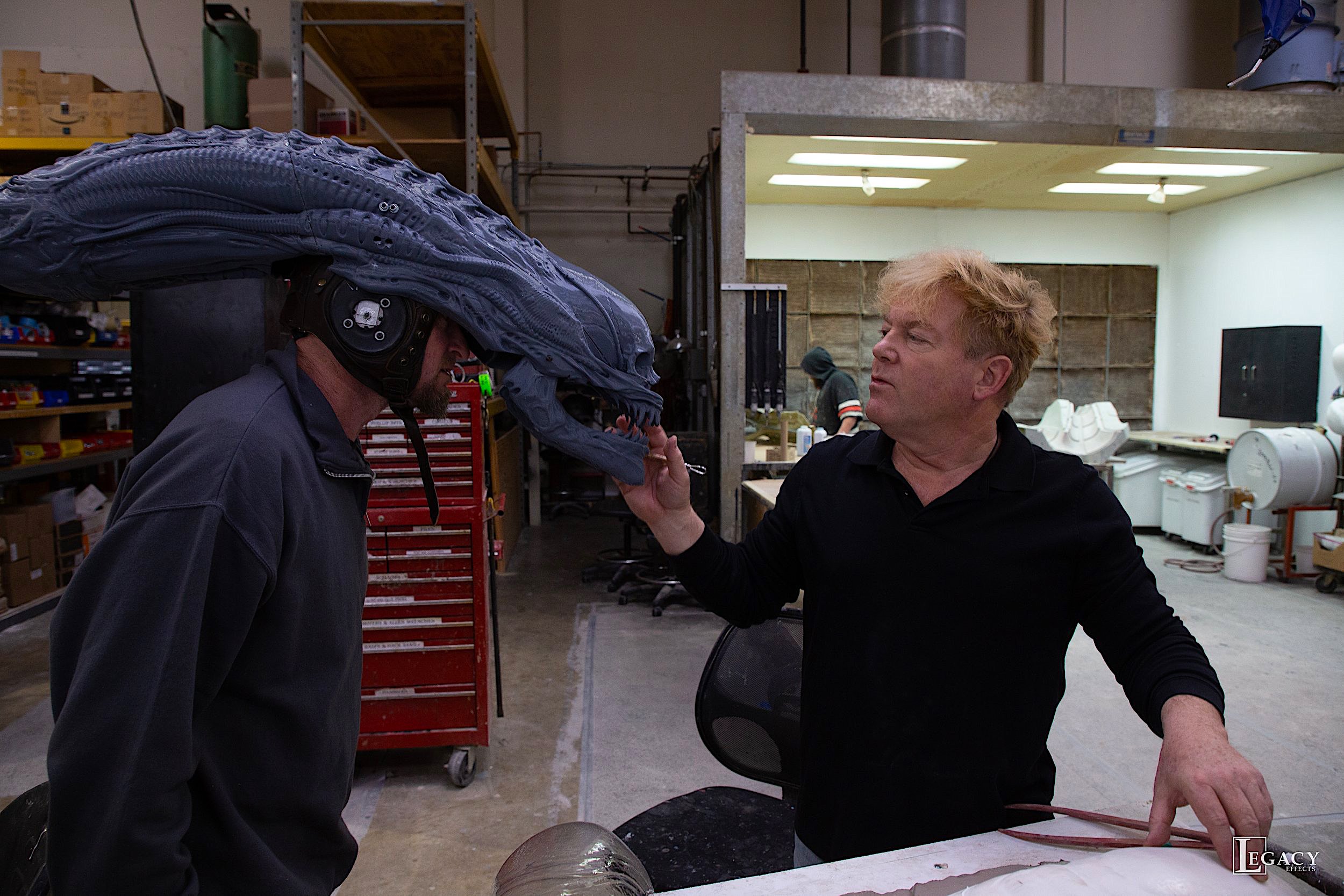
"Alien: Romulus" has effectively rebooted the aging "Alien" franchise with its return to old-fashioned horror scares, practical special effects, brilliant worldbuilding, a solid cast, and a focused storyline that satisfies both longtime fans and newcomers — there's a reason it shot to the upper echelons of our Alien movies ranked list.
Aiding director Fede Alvarez ("Evil Dead," "Don't Breathe") and cinematographer Galo Olivares ("Gretel and Hansel") on realizing their vision for this hit "interquel," the Academy Award-nominated team at Legacy Effects brought out their best cinematic illusions in manifesting the film’s marauding extraterrestrial monsters.
Founded in 2008 after the great Stan Winston sadly passed away and Stan Winston Studios was disbanded, Legacy Effects has become an industry leader in providing creature effects and costumes. These talented craftsmen, artists, and makeup masters have been involved with nearly every Hollywood sci-fi, fantasy and horror feature film and TV series over the past 15 years, including contributions to "Iron Man," "Thor," "Real Steel," "The Avengers," "Captain America: Civil War," "Guardians of the Galaxy Vol. 2", "The Mandalorian" and "Star Trek: Strange New Worlds."
Back in the day, Mahan and his team worked closely with Winston conjuring up makeup designs and visual effects for sci-fi projects like "The Terminator," "Aliens," "Predator," "Terminator 2: Judgment Day," "Jurassic Park," "The Lost World: Jurassic Park," "Galaxy Quest," "War of the Worlds" and many more. With "Alien: Romulus," Mahan & Co. delivered even greater chills for audiences using a combination of old-school puppetry, animatronics, and actor-in-a-suit performances that meshed well with the aesthetics of 1979's "Alien" and 1986's "Aliens."
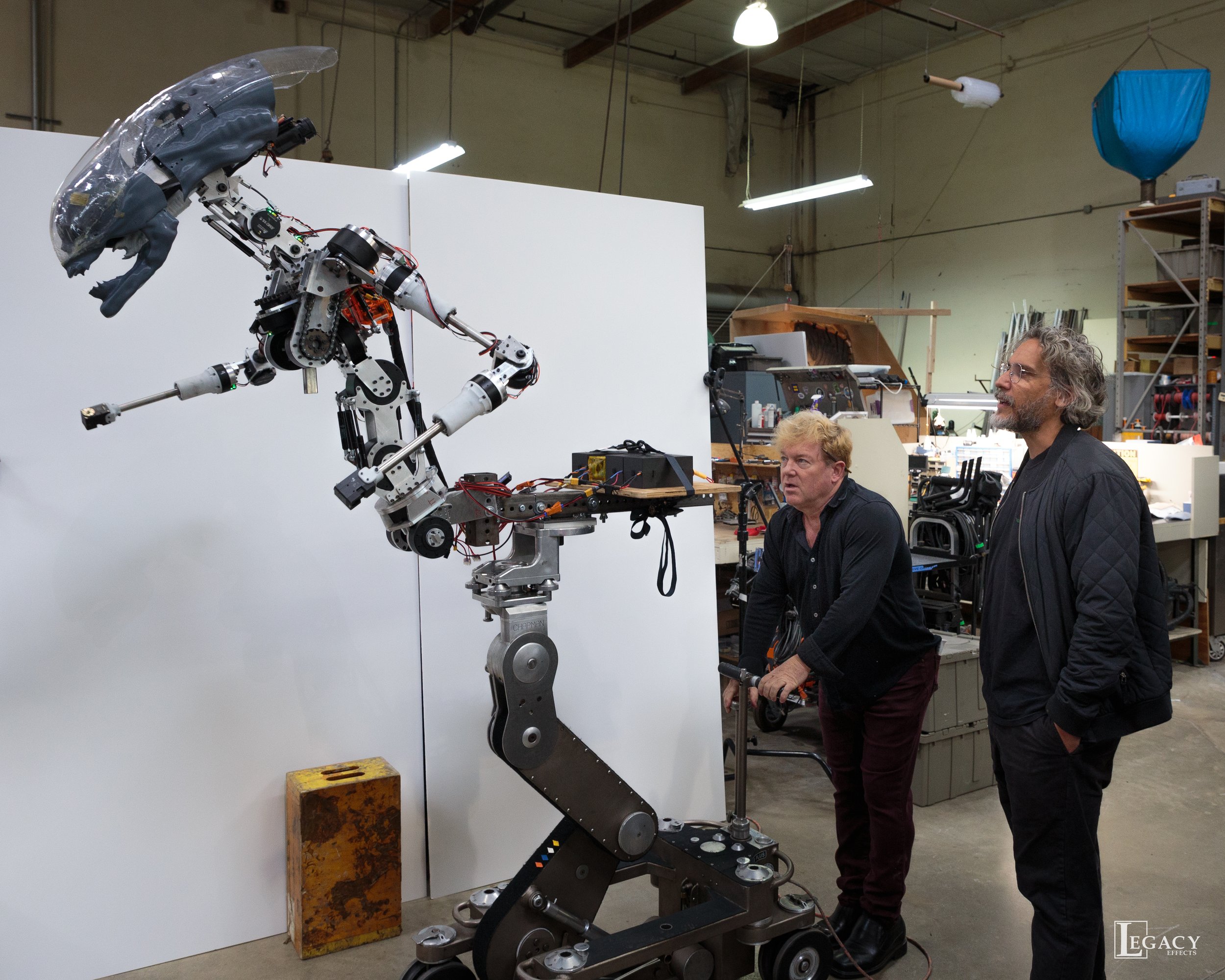
Headed up by Mahan and his Effects Co-Supervisors Lindsay McGowan and J. Alan Scott, alongside Production Manager Damon Weathers, Legacy worked intimately with Alvarez to design and manufacture the xenomorph puppets and suits, cocoon, Rook animatronic puppet, and design/makeup effects of the Offspring.
“I knew who Fede was from 'Evil Dead' and 'Don't Breathe,'” Mahan tells Space.com. “From a script read, I had that same feeling where you sense that it’s going to be something special. It was very true to the origin and it was more of a frightening film. It was one frightening scenario after another, which is enjoyable to me because I love horror films and I don’t get to do them that much. After meeting Fede and listening to his mandate of wanting to recapture the essence of the first two films, returning to how the creatures are presented and the feeling the audience got on a visceral level, really excited myself and the team here at Legacy. You start to understand what we're going to be making, which is a very tactile, very sensuous actual body that's going to be on-set moving and interacting with actors and doing as much in-camera, on-set, live-action effects as possible."
Mahan recalls that Alvarez had some preliminary designs done, but there was still a general feeling of what it was. Legacy’s magicians then began to distill it to what they thought it should be, working with Scott Patton and his design team that included Savannah Suderman, Darnell Isom, and Adam Milicevi.
Breaking space news, the latest updates on rocket launches, skywatching events and more!
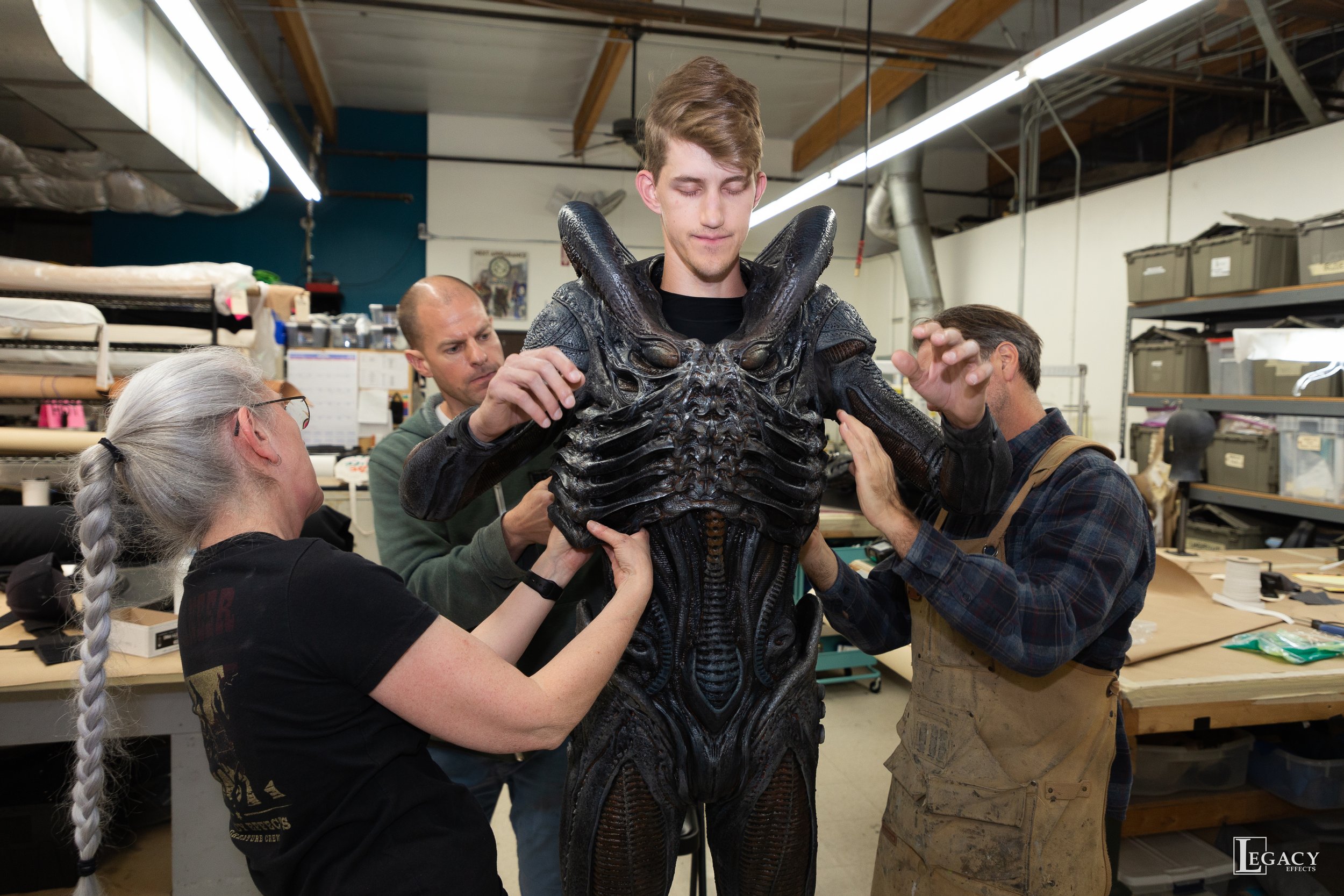
“We didn’t want it to be just a man wearing a costume," says Mahan. The xenomorph was sort of a miniature version of the queen. It's a mechanical device so it's very tall, the waist is very narrow and the limbs are long. So the silhouette is not human at all.
"Of course we did have a performer in a suit because you need one for wire work and stunt work and difficult body movements. For instance, the birthing through the cocoon in the wall has to be a performer because of the dexterity of movement and the timing of things. You design the suit to be one-to-one as much as possible to the animatronic. You can never show it full-body, but you can intercut it between other things. The animatronic is also a very heavy robot. If you strip the skin off of it, ironically it looks like a Terminator. It has to be motivated by carts and custom dollies. Then we have to make a lightweight one, full-body, using a technique called Bunraku, which is a Japanese style of puppetry that has a performer behind it that's attached to it with various rods that you paint out digitally. Whatever the performer does… walking, running, squatting, that translates to the puppet in front. So you can have a very tall xenomorph walk through sets or crouch down and be active for full body walking shots that you can accomplish quite easily.
"What was important for Fede was to capture the feeling for audiences that they're really sensing something is truly there. Then use CGI creatures when you need to, like things crawling down a wall or things that defy the physics of what we can do. It's planned this way – what shots are physical, which are digital, which are hybrid."
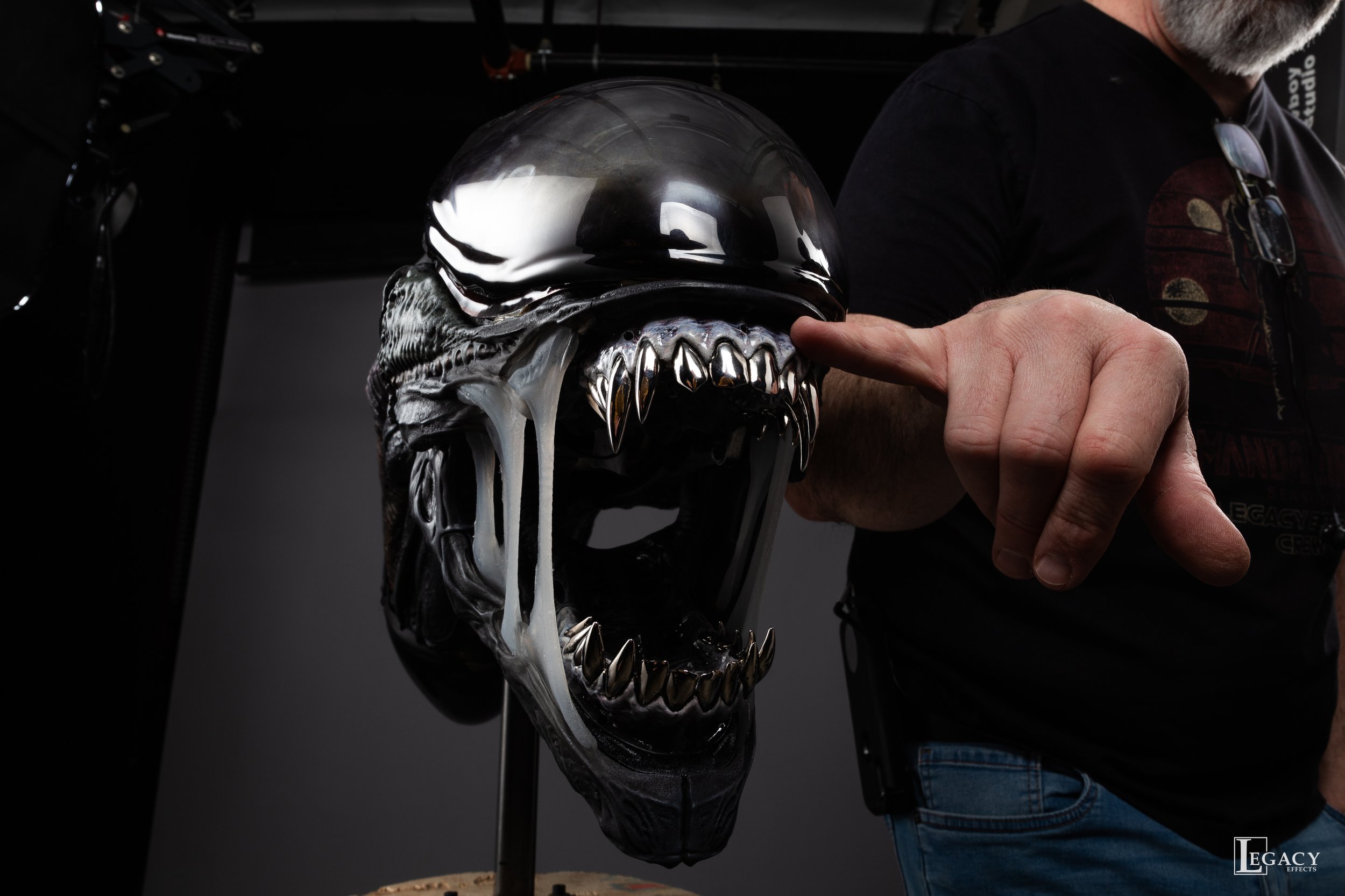
Where Mahan and his Legacy team members ended up creating some interesting new techniques are when the xenomorph has more intimate encounters with the actors and viewers are getting an up-close study of its petrifying visage.
"We used air blowers to push the fluid all over the place so it's going sideways and off to the side, it's not just floating down. We had channels built through the xenomorph's jaw systems that were plumbed so you could have tubes running through the head to a radio-controlled pump that would deliver fluid on and off as you wish. Two consistencies of fluid and then high pressure blowers underneath and there was also smoke coming out of the mouth. So you have this strong mix of smoke and fluid not just running straight down. They did it in the first film. They used pure water, I think, just kind of running down and that was really very effective."
Perhaps the most unsettling creature Legacy conceived was the hybrid monster birthed by Kay in the Romulus finale. It's a hideous monstrosity played by seven-foot-seven Romanian basketball player Robert Bobroczkyi, who was a consummate pro despite this being his first film.
"Fede had always written that the Offspring is going to be birthed, it's going to happen very fast because they’ve been engineered to grow very fast," notes Mahan. "The life cycle is accelerated in a frightening way, otherwise the story doesn't have time to wait for it to happen. There was a lot of discussion about what this child was going to look like. Was it going to start as a baby in a pod? Were we going to cut to a ten-year-old in makeup for a moment, then cut to somebody else? Was it going to have long black hair? We were concerned because it’s the last ten minutes of a movie and that has to be strong because that's what the audience remembers most when they walk out at the end of the film. That creature had to be something spectacular."
"Fede wanted to play with the ideas earlier in the design phase of whether it was more xenomorph-like or more Engineer-like. In the end we found a fusion between the two and went to more of a sympathetic human with touches of a little of both, but the black eyes of the Engineers were what stood out. That helped bridge it and told the story with subcutaneous xenomorph textures. That was a fun technique."
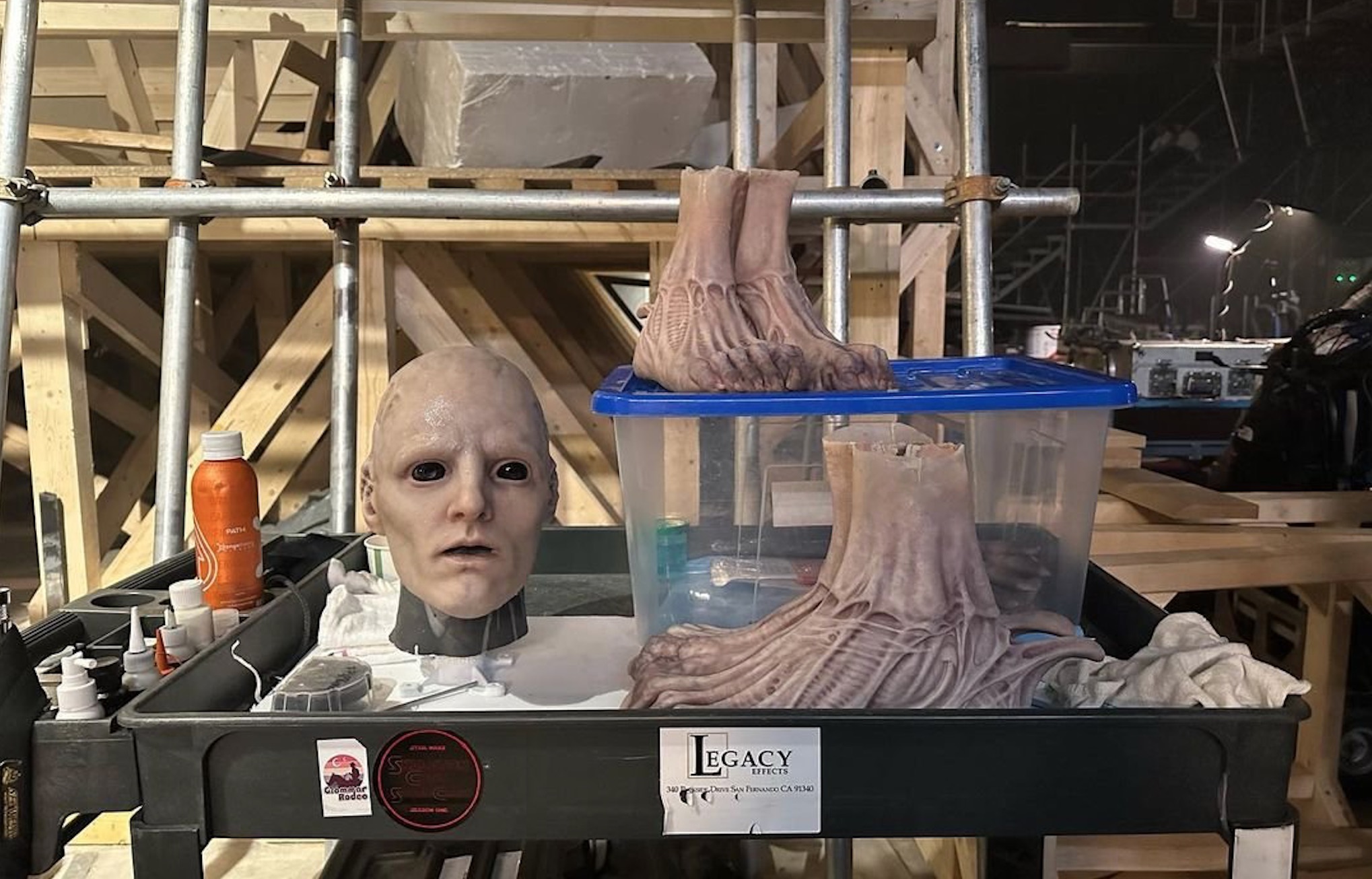
Alvarez scored by finding the perfect actor to play the Offspring due to Bobroczkyi's unusually lofty stature, incredible patience, and elongated limbs.
"He made the sensation of the makeup work because of his remarkable physique. He’d never acted before or wore advanced full-body prosthetics and this was brand new territory. The studio and Fede and everyone took a chance on him. Fede asked if I thought we could work with this guy and I said, 'Absolutely.' Robert took it very seriously and he worked with motion coaches and acting coaches to create this character. In the end, he did as fine a job as any creature performer I've ever worked with. That makeup on a six-foot-tall person wouldn't have looked like anything different than 'Prometheus' or 'Covenant' with average-sized people wearing makeup. The effect has been tremendous. Audiences sense that it's something really there, although a lot of people think he’s a CGI creation, which I find astonishing.
"In the end, Lindsay, Alan, and I are very proud of this incredible film and the hard work the artists in house did."
20th Century Studios' "Alien: Romulus" is currently playing in theaters. You can also watch the rest of the Alien franchise on Hulu, and to find out where Alien Romulus slots into the established canon, check out our list of the Alien movies in order.
Join our Space Forums to keep talking space on the latest missions, night sky and more! And if you have a news tip, correction or comment, let us know at: community@space.com.

Jeff Spry is an award-winning screenwriter and veteran freelance journalist covering TV, movies, video games, books, and comics. His work has appeared at SYFY Wire, Inverse, Collider, Bleeding Cool and elsewhere. Jeff lives in beautiful Bend, Oregon amid the ponderosa pines, classic muscle cars, a crypt of collector horror comics, and two loyal English Setters.
